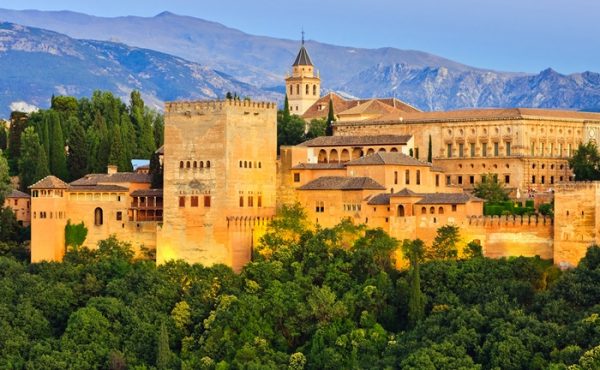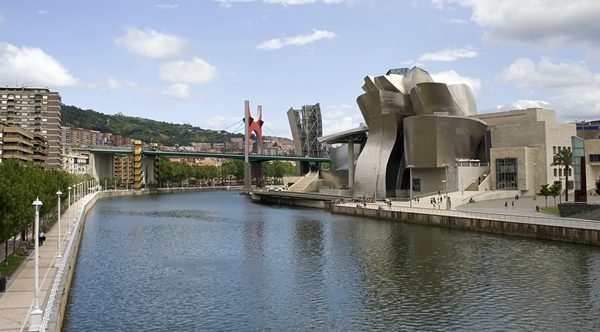Six great tourist attractions to visit in Spain
What comes to mind when you think of Spain? Do you conjure up flamenco dancers and bullfighters? Or do you think of fabulous culinary delights such as paella, tapas and sangria? Spain is a nation of contrasts: modern urban cities studded with iconic historical sites; sun drenched beaches in the south and the majestic Pyrenees Mountains in the north; and architectural marvels housing artistic wonders.
Did you know that Spain has the second largest number of UNESCO World Heritage sites in the world? There are monasteries, palaces, fortresses castles in Spain and over 1400 museums scattered throughout the country. Narrowing down the list of great places to visit is an almost impossible task, but the following six sites are true standouts and should not be missed.
1. El Escorial
San Lorenzo de El Escorial is both a monastery and a former royal residence of the kings of Spain. It is situated in the town of the same name, about 28 miles north west of Madrid. It was constructed in the reign of King Phillip II between 1563 and 1584. It is an enormous granite building with a tower at each corner, severe and simple in its rectangular lines. Within the walls there is a huge chapel with a private gallery for the royal family, a significant library decorated with Renaissance frescoes, and the Pantheon of Kings where all Spanish monarchs are buried. It is sobering, and slightly surreal, to stand in the chamber where the remains of the kings of Spain are sealed behind plaques, knowing that this will also be the final resting place of the current king, Juan Carlos. The town of El Escorial, with architecture spanning four centuries, is also worth spending some time.

El Escorial
2. The Alhambra
Located in the Andalucía region, Granada is well known for its many architectural wonders, especially the Alhambra. The name Alhambra means “The Red” in Arabic, probably because the walls turn a brilliant red at sunset. Originally built for military purposes in the 9th century, the Alhambra was converted into a fortress-palace complex by the Nasrid Arabic emirs in the 13th and 14th centuries. It’s been used as a barracks, abandoned to thieves and beggars, and almost blown up, but is now recognized as a World Heritage site. Today, the complex houses palaces, towers, gardens, two hotels, bookshops and souvenir shops. The interior of the Alhambra is richly decorated with vivid Islamic art, peaceful courtyards and beautiful gardens, bringing to mind an exotic Arabian palace.

Alhambra
3. La Sagrada Familia
One of Barcelona’s most popular tourist destinations, La Sagrada Familia is the magnificent cathedral known as Antoni Gaudi’s masterpiece. Construction on the cathedral began in 1882 by the architect Francisco de Paula del Villar. One year later, Gaudi took over and changed the original neo-gothic style into more of his own modernist style, based on forms found in nature. Gaudi died in 1926, but work has continued on the cathedral and is expected to be completed in the next few decades. The church has a capacity for 13,000 people. It will have 18 towers: 12 representing the apostles; 4 representing the 4 evangelists; one dedicated to Jesus Christ and another to the Virgin Mary. Some towers are accessible to the public by elevator and feature spectacular views of Barcelona.

La Sagrada Familia
4. The Guggenheim Museum in Bilbao
This modern masterpiece made of titanium, glass and limestone opened in 1997. As soon as it opened it was praised for its innovative design and is still a wonder to behold. The museum has close to ninety exhibitions from the Guggenheim Foundation as well as objects from the permanent collection of the Guggenheim Museums and over ten million visitors, this museum is one not to miss.

The Guggenheim Museum in Bilbao
5. Seville Cathedral
Seville’s cathedral is the largest Gothic cathedral in the world and the third largest cathedral overall, behind St. Peter’s in Rome and St. Paul’s in London. It was originally built over a mosque and still contains the minaret of the mosque, known today as the Giralda Bell Tower. Inside the cathedral you’ll find the tomb of Christopher Columbus. Supposedly his body was brought back from Havana and is buried here. The largest altar piece in the world, the Retablo Mayor, is located in the main chapel. It contains 36 gilded relief panels with scenes from the Old Testament and lives of various saints.

Seville Cathedral
6. Park Guell
Antoni Gaudi didn’t just design cathedrals. He also designed the magnificent and whimsical Park Guell in Barcelona. Gaudi was hired in 1900 by Count Eusebi Guell to create a miniature garden city of houses for the rich and well to do of Barcelona. Here you’ll find a dragon, terraces designed with vibrant, colorful tiles, and numerous exotic stone and ceramic sculptures. The park is open every day and entrance is free to the public.

Park Guell


